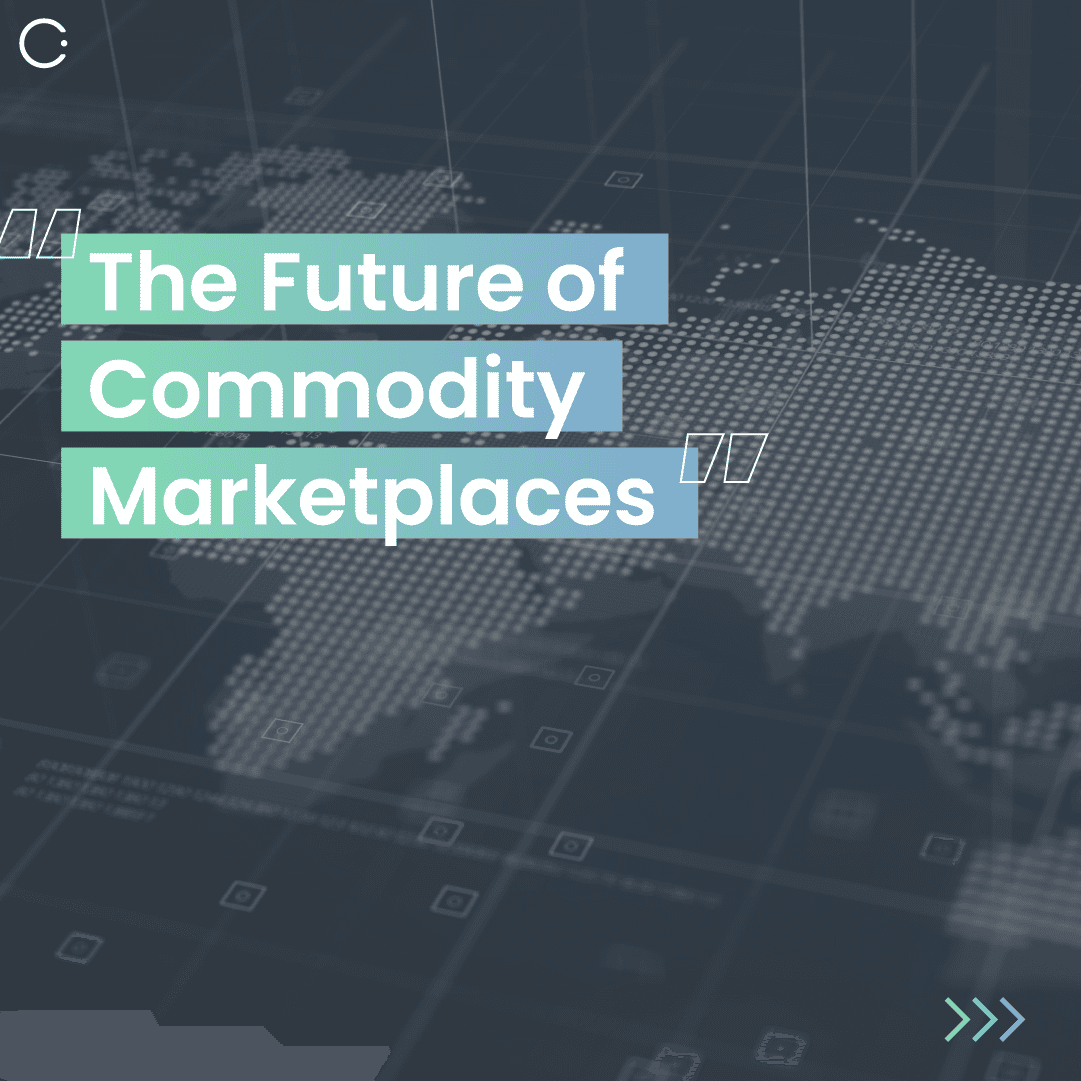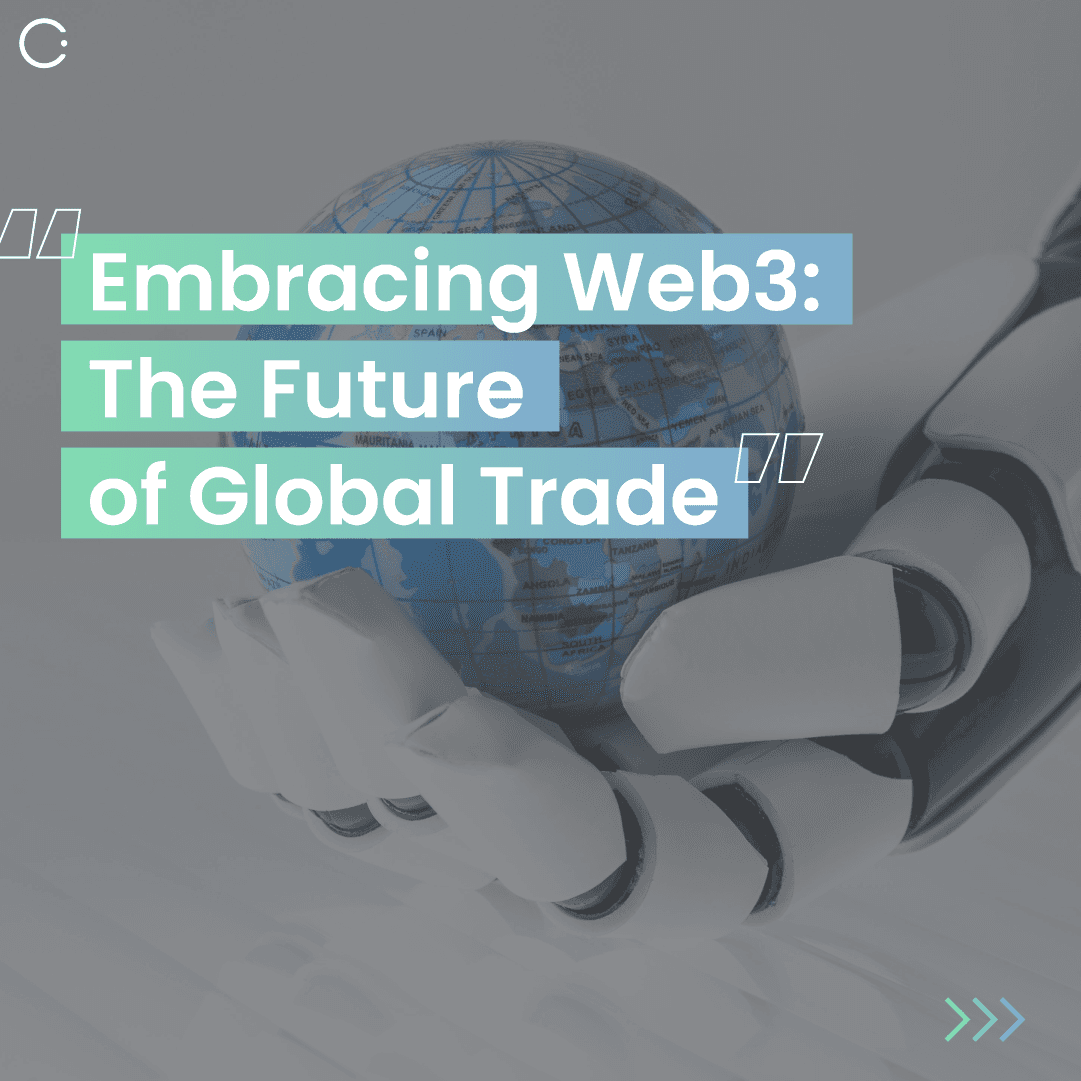
Back to Blog

Keep on Top of your To-Do List With
Phantom’s Slick New Comment.
Web3 represents the next phase of the internet, focusing on decentralized protocols and technologies. It's not just a technological shift but a paradigm change, redefining how businesses operate and trade globally.

Circularity Finance
Sep 1, 2023
We stand on the precipice of financial innovation, where technology meets the financial world, creating groundbreaking changes that will define our era. Leading the charge is Circularity Finance, a pioneering financial platform set to revolutionize the way commodity marketplaces operate in the emerging Web3 era.
By integrating a strategic regulatory framework into decentralized finance commodity marketplaces, Circularity Finance aims to create a new standard for such operations. This evolution will occur through various key phases:
Asset Tokenization via Universal Tokenization Engine
Tokenization is the process of converting rights to an asset into a digital token on a blockchain. Circularity Finance’s Universal Tokenization Engine (UTE) does this in an efficient, verifiable, and secure manner. This process enables the creation of an infinite number of tokens, each representing an underlying asset, effectively digitalizing the commodities market for a more streamlined and transparent operation.
Bridging EVM Networks with Hyperledger
The UTE functions by integrating Ethereum Virtual Machine (EVM) networks with Hyperledger to create ‘Digital Twin Assets’. Each digital twin represents a real-world asset on the blockchain, serving as a bridge between the physical and digital realms.
Hyperledger’s private channels and EVM’s public networks are interlinked, providing the best of both worlds. The blend of these technologies facilitates the creation of private channels for confidential transactions while making public access gateways available for ease of interaction between public/retail users and financial institutions. This combination allows for a secure, efficient, and streamlined operation, redefining the commodities market.
Revolutionizing Various Sectors with Tokenized Commodities & Assets
Ciruclarity’s UTE’s robust functionality allows for the tokenization of assets across multiple sectors, revolutionizing how they operate and how value is perceived and exchanged. Here are examples of how it could transform several economic sectors:
Real Estate
In real estate, tokenization can democratize access to property investment. Instead of purchasing an entire property, investors can buy tokens representing a fraction of the property. This enables more people to participate in property investments, diversify their portfolios and reduces the barriers to entry.
Fine Art
The art sector can benefit hugely from tokenization. Like real estate, fine art can be expensive and out of reach for many potential investors. However, by tokenizing artworks, artists or owners can sell fractional ownership, enabling a wider base of investors to participate. It also provides artists with a new way to monetize their work.
Agriculture
Tokenization can introduce new financing models in agriculture. Farmers can tokenize their future crops, selling tokens to investors who will receive a portion of the yield. This provides farmers with upfront capital for operations and offers investors a unique asset class.
Energy
The energy sector can utilize tokenization to fund renewable energy projects. Developers could tokenize future energy production, allowing investors to purchase tokens and receive a share of the energy produced. This could incentivize the development of renewable energy infrastructure.
Manufacturing
Manufacturing firms can tokenize their machinery or future production, giving investors the opportunity to invest in these assets and share in the profits generated by their operations. This can help manufacturers raise capital and give investors exposure to the manufacturing sector.
By creating a digital twin of these assets on the blockchain, the UTE makes them accessible, divisible, and tradeable, contributing to a more inclusive and efficient financial ecosystem. Tokenization also introduces a level of transparency and liquidity previously unseen in these sectors, propelling them into a new era of innovation and growth.
As we move further into the digital age, Circularity Finance’s UTE and the process of tokenization will increasingly become integral parts of how we interact with value, commodities, and assets, heralding a new paradigm in finance and commerce.
The Evolution of 1404 Tokens: Bringing Clarity and Innovation to Various Sectors
Diving deeper into the world of tokens, we arrive at XRC1404 tokens, which are emerging as the backbone of the new commodity marketplace in a decentralized world. The creation of 1404 tokens, achieved via the fractionalization of Non-Fungible Tokens (NFTs), allows the transformation of a unique, indivisible token into multiple fungible tokens, each possessing unique data related to the commodity it represents.
Understanding XRC1404 Tokens
An XRC1404 token, in essence, is a standard for issuing tokens with transfer restrictions on the XDC Network, built off of the standards found on the Ethereum blockchain. These restrictions allow token issuers to control and limit token transfers based on various parameters, ensuring compliance with various regulatory requirements. This aspect of XRC1404 tokens is crucial for maintaining the transparency, integrity, and legality of the growth of future commodity marketplaces.
Applying XRC1404 Tokens to Various Sectors
Building on the examples mentioned above, let’s envision how XRC1404 tokens could be utilized across sectors:
> Real Estate
In real estate, property owners could issue XRC1404 tokens that represent shares of a property. Investors can then purchase these tokens, gaining fractional ownership of the property.
> Fine Art
Artists or art owners could tokenize their artworks into XRC1404 tokens. Investors can then purchase these tokens, owning a fraction of the artwork and benefitting from any future appreciation of its value.
> Agriculture
Farmers could tokenize their future crop yields into XRC1404 tokens. Investors can buy these tokens and benefit from a share of the future yield.
> Energy
Developers could tokenize future energy production into XRC1404 tokens. Investors can buy these tokens and receive a share of the energy produced, offering a unique asset class in their portfolios.
> Manufacturing
Manufacturers could tokenize their machinery or future production into XRC1404 tokens. Investors can buy these tokens and share in the profits generated by the machinery or the manufactured goods.
Regulatory Oversight for XRC1404 Tokens
To bring these tokens into legal clarity within the United States, regulatory oversight is necessary. In the context of commodity tokenization, the Commodity Futures Trading Commission (CFTC) can play a pivotal role. By leveraging the CFTC’s oversight, companies can operate as legal entities within a regulatory framework that provides clear guidelines on the issuance and trading of these tokens and their interaction potentials within commodity marketplaces built on DLT.
Such regulation can pave the way for innovation and bring back the power of bartering through tokenized commodities within digital micro-economies managed by legally operating entities. It can establish the parameters within which businesses, corporations, and individuals can operate, empowering them to harness the potential of this technology to innovate and trade in ways that were not previously possible. This could mark a return to a world of innovation and bartering, all underpinned by the transparent, secure, and efficient technology of XRC1404 tokens.
In a nutshell, the use of XRC1404 tokens across various sectors can usher in a new era of decentralization, transparency, and inclusivity, and with the right regulatory oversight, it can offer a reliable and secure future for commodity trading and investment.
The Potential of Decentralized Ownership Record Repositories
The landscape of the global financial system is undergoing a monumental shift, and Circularity Finance is at the forefront, guiding this transition towards a more inclusive, efficient, and secure future. By imposing Know Your Customer (KYC) requirements on buyers in 1404 Commodity Marketplaces, Circularity Finance ensures regulatory compliance and prevents unlawful transactions, maintaining the transparency and security of the marketplace.
Building a Decentralized Ownership Records Repository
KYC requirements, while often viewed as a hurdle in the decentralized world, play an essential role in creating a secure and regulated financial environment. For Circularity Finance, they form the basis of a decentralized identity repository — a core component of the Universal Tokenization Engine (UTE).
This decentralized repository is where individuals can voluntarily register themselves, linking their Web3 wallet of use and current Web3 wallet addresses, national photo ID and driver’s license, along with their email. This allows for the creation of a holistic identity profile in a secure, decentralized environment, bridging the gap between traditional financial compliance norms and the innovative Web3 ecosystem.
AML and Reputation Smart Contracts
Without KYC and Anti-Money Laundering (AML) reputation smart contracts, the UTE would not be able to understand an individual’s “weight” within the system. This weight represents the quantity and value of tokenized assets tied back to the KYC’d wallet address. The more tokenized assets associated with the identity and the wallet, the greater the wallet’s weight in any financial institution.
To measure this weight, Circularity Finance plans to issue a unique Soul-Bound Token NFT (SBT NFT) to all individuals who participate in the UTE ecosystem. This SBT NFT becomes the identifier indicating the wallet’s reputation in a financial environment to any regulated and participating DeFi applications.
Leverage Your Net-Worth
The SBT NFT thus offers the opportunity to redefine financial rates based on an individual’s ability to demonstrate net worth. This pioneering approach introduces a process to define an “accredited investor” on Web3, democratizing access to investment opportunities that were previously only available to the financially elite.
More importantly, this process leads to the creation of the world’s first repository of decentralized asset ownership records. Such a system fundamentally transforms the way we record and verify ownership, providing a transparent, secure, and efficient solution to the challenges of traditional asset registries.
The creation of decentralized identity repositories form the backbone of Circularity Finance’s vision to revolutionize the financial landscape. Through these initiatives, the Universal Tokenization Engine is set to enable a future where finance is truly inclusive, transparent, and secure.
Over-collateralized Loans and Regulated Stablecoins
Over-collateralized loans are a significant part of Circularity Finance’s framework. Here, tokenized assets, XDC, BTC, or ETH are used as collateral for loans. If the value of the collateral falls below 40% of its initial lock-up value, the lending protocol can liquidate the assets immediately.
This approach allows for the creation of “regulated stablecoins” — digital currencies pegged to a stable asset. Unlike traditional stablecoins, these regulated variants are backed by over-collateralized loans, making them more secure and reliable.
Through these pivotal phases, Circularity Finance is not just restructuring the commodity marketplace but setting a benchmark for the financial world. It provides a transparent, efficient, and regulatory-compliant platform where digital assets, commodities, and financial services seamlessly intersect.
To learn more about how Circularity Finance is shaping the future of commodity marketplaces and for all the latest updates, visit Circularity Finance. Be part of the revolution that’s making Web3 commodity marketplaces more accessible, more efficient, and more secure.
Most
Popular Blog
Learn from our experts in regenerative finance.
Learn More










